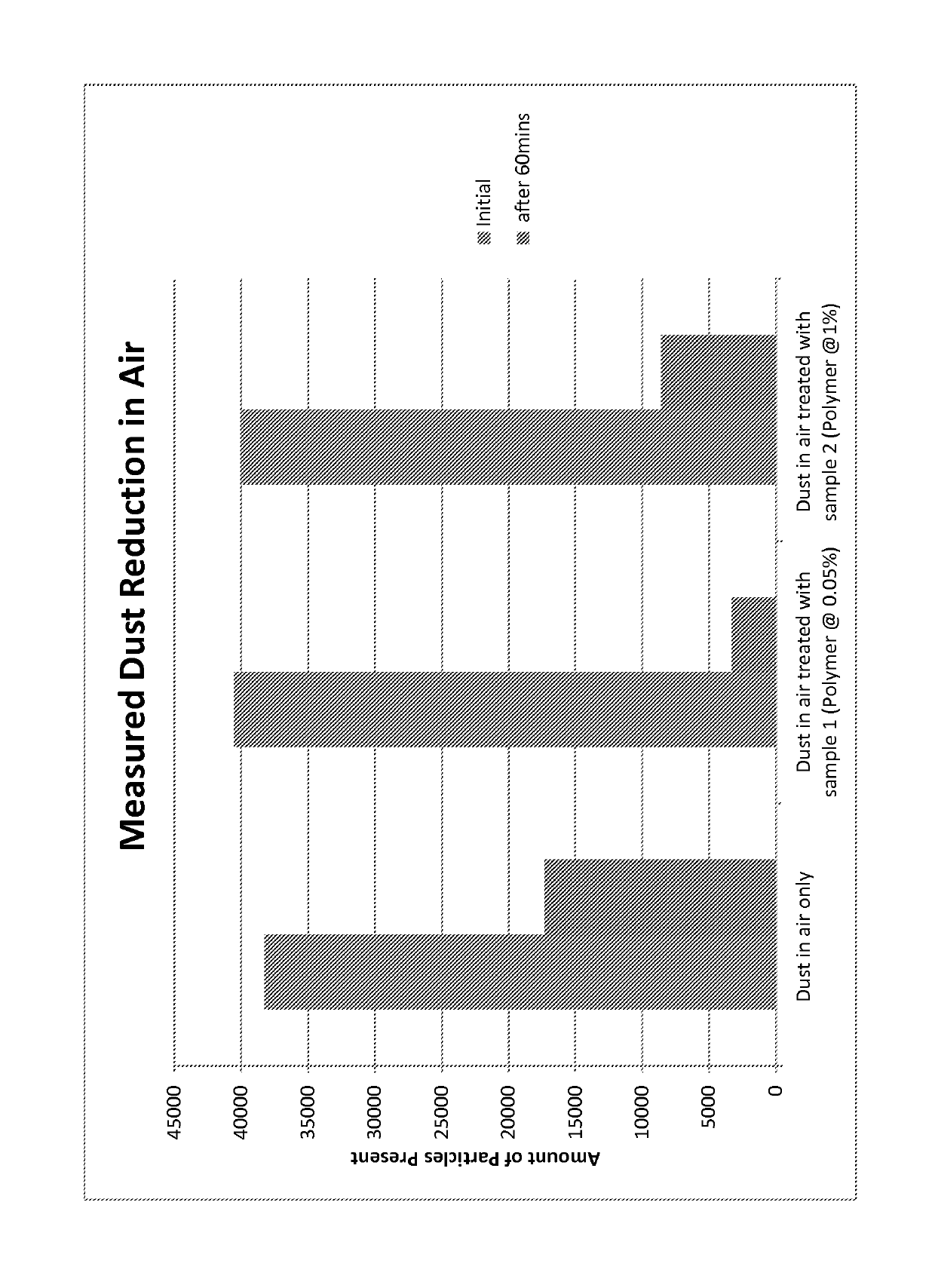Methods for reducing particulates in the air
- Summary
- Abstract
- Description
- Claims
- Application Information
AI Technical Summary
Benefits of technology
Problems solved by technology
Method used
Image
Examples
examples
[0211]The following are non-limiting examples of particulate reducing compositions according to the present invention and method for measuring particulate reduction of compositions according to the present invention.
[0212]
Exemplary FormulasIIIIIIIVVVIIngredientsWt. %Wt. %Wt. %Wt. %Wt. %Wt. %Hydroxypropyl0.2——0.30.1beta-cyclo-dextrinZwitterionic0.10.10.1—0.10.05PolymerDiethylene0.25—————glycolSilwet L-76000.10.2—0.20.10.1Sodium Dioctyl0.2—0.20.10.20.2SulfosuccinateAcid Salt0.10.1—0.20.1—Ethanol355355Hydrogenated0.40.81.21.61.85castor oilPerfume0.60.80.40.210.1MixtureOrganic Acid0.050.1—0.10.05—Preservative0.0150.0150.0150.0150.0150.015HCl or NaOHto pH 5to pH 5to pH 5to pH 5to pH 7to pH 8Distilled waterBalanceBalanceBalanceBalanceBalanceBalance
Dust Particle Reduction Test
[0213]To determine the profile of floating dust particles when treated with compositions according to the present invention, one may utilize the following test design which consists of:[0214]an enclosed environmental ...
PUM
| Property | Measurement | Unit |
|---|---|---|
| Length | aaaaa | aaaaa |
| Length | aaaaa | aaaaa |
| Fraction | aaaaa | aaaaa |
Abstract
Description
Claims
Application Information
 Login to View More
Login to View More - R&D
- Intellectual Property
- Life Sciences
- Materials
- Tech Scout
- Unparalleled Data Quality
- Higher Quality Content
- 60% Fewer Hallucinations
Browse by: Latest US Patents, China's latest patents, Technical Efficacy Thesaurus, Application Domain, Technology Topic, Popular Technical Reports.
© 2025 PatSnap. All rights reserved.Legal|Privacy policy|Modern Slavery Act Transparency Statement|Sitemap|About US| Contact US: help@patsnap.com



